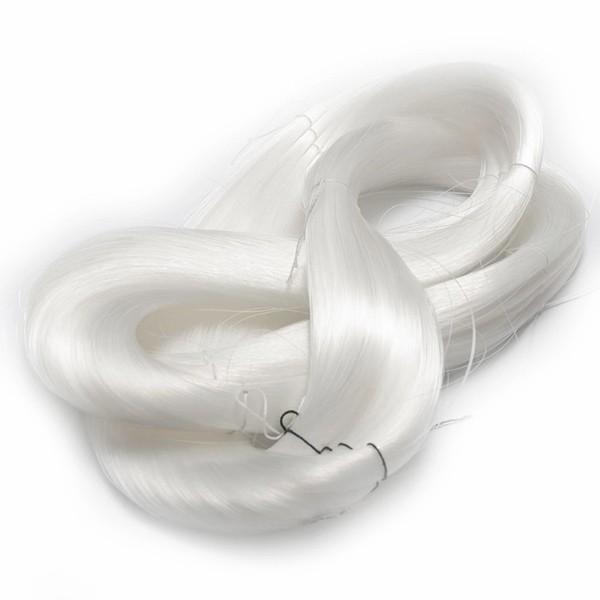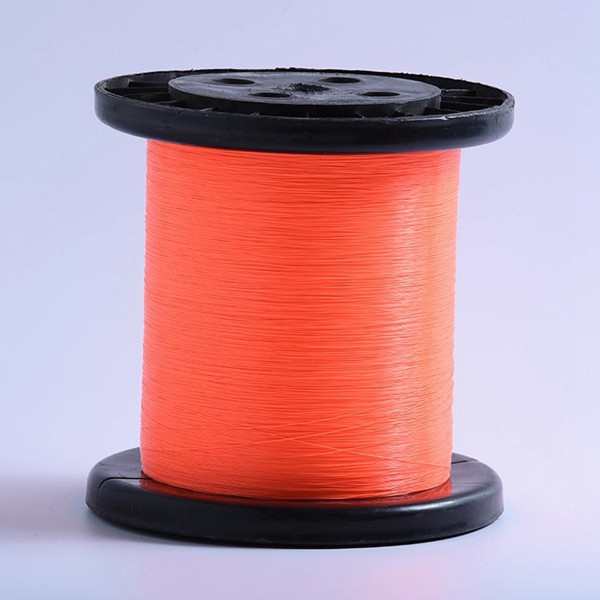Welcome!







Hot Sale Nylon Monofilament Fishing Line 150m Fishing Tackle Nylon Twine for Fish Net
Product Description
Nylon fishing lines have become the preferred choice for fishing enthusiasts and professional anglers due to their excellent performance and wide range of applications. Choosing the appropriate nylon fishing line and using and maintaining it correctly can bring a better fishing experience and harvest.

Nylon thread has become one of the indispensable materials in modern society due to its excellent performance and wide range of applications. By understanding the characteristics, production process, application fields, and importance of nylon thread in modern society, we can have a deeper understanding of this material and fully utilize its advantages in practical life and work.

Nylon thread, also known as polyamide fiber thread, is a type of wire made from nylon material. Nylon thread has excellent tensile strength and can withstand large tensile forces without being easily broken. It has excellent wear resistance and can maintain good performance even in frequent use or harsh environments. Nylon thread has good resistance to most chemicals and is not easily corroded. Nylon thread is relatively lightweight, making it easy to carry and operate. Even after being subjected to significant tension, the nylon thread can quickly return to its original state, reducing the risk of breakage.

Nylon thread has become an indispensable material in many fields such as textiles, fisheries, and outdoor sports due to its excellent durability, tensile strength, and lightweight characteristics. This article will provide a detailed introduction to the characteristics, production process, application fields, and important role of nylon thread in modern society. Nylon fishing lines have good resistance to water and are not easy to absorb water and expand, thus maintaining their original strength and performance.

The production process of monofilament hemp thread includes multiple steps such as picking, soaking, degumming, breaking, screening, cleaning, refining, etc. of hemp fibers. Firstly, harvest mature hemp stems and soak them in suitable temperature and humidity conditions to soften the fibers and remove impurities. Next, degumming treatment is carried out to remove the gum substance on the surface of the hemp fiber, improving the softness and purity of the fiber. Then, the fibers are peeled off from the stem by mechanical or chemical methods, and screened and cleaned to remove impurities. Finally, the refined fibers are fed into a spinning machine for spinning, forming a single filament hemp thread.

Recommended Products
Recently Viewed
 Factory Price Fishing Reels Super Strong Level Fishing Nylon Line Monofilament Nylon Fishing Rod for Fish Net
Factory Price Fishing Reels Super Strong Level Fishing Nylon Line Monofilament Nylon Fishing Rod for Fish Net Wholesale 0.5-6mm Virgin PE/Polyethylene/Nylon/Plastic/Thread Monofilament Twisted Twine for Europe Markets
Wholesale 0.5-6mm Virgin PE/Polyethylene/Nylon/Plastic/Thread Monofilament Twisted Twine for Europe Markets Wholesale 0.34mm Fishing Line Fish Twine Monofilament Nylon Fishing Line for Fish Net
Wholesale 0.34mm Fishing Line Fish Twine Monofilament Nylon Fishing Line for Fish Net High Quality Fishing Reels Super Strong Level Fishing Nylon Line Monofilament Nylon Fishing Rod for Europe Markets
High Quality Fishing Reels Super Strong Level Fishing Nylon Line Monofilament Nylon Fishing Rod for Europe Markets Hot Sale 0.5-6mm Virgin PE/Polyethylene/Nylon/Plastic/Thread Monofilament Twisted Twine for Europe Markets
Hot Sale 0.5-6mm Virgin PE/Polyethylene/Nylon/Plastic/Thread Monofilament Twisted Twine for Europe Markets
Contact Us
Shaoxing Global Chemical Fiber Co., Ltd.
